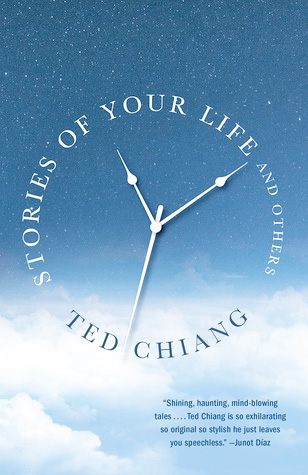
Liking What You See : A Documentary, is a short novellette by Ted Chiang, released alongside others within the book, Story of Your Life and Others (2002). The story is narrated in the form of a documentary script, with interviews and speeches by various characters all talking about the central topic of calliagnosia, or calli for short.
Calli is introduced as a fictional technology developed by neuroscientists that allows humans to stop judging the aesthetic quality of other humans. Using the fact that there are specific mechanisms within the brain that allow aesthetic judgment of human faces, scientists were able to find a way to simply turn this on and off. Since only the part of aesthetic judgement is modified, people can still differentiate between faces, but simply do not experience aesthetic reactions to those differences. So as suggested in the book, "Calliagnosia by itself cannot eliminate appearance-based discrimination. What it does, in a sense, is even up the odds; it takes away the innate predisposition, the tendency for such discrimination to arise in the first place."
Starting from the interview of a student at Pembleton College, where a vote on whether mandatory calli should be enforced on students is taking place, the story weaves together the ideas and lives of people from all backgrounds, from students, parents, staff, politicians, to cosmetic corporations. All have their own interests and thoughts on the subject of calli, some saying that the demerit of a small disability is worth the equality and harmony calli could bring, while others argue that radical measures such as calli are not the answer, saying maturity is about seeing the differences between people, but realizing that those differences do not matter.
The story is fundamentally a commentary on lookism within our society. While aesthetic judgement of others is an innate human trait, many within society, whether unconsciously or not, regard aesthetic looks as reflections of good human traits. This can be seen in the case of the protagonist, who after removing her calli treatment, realizes that she has started to judge people as having good qualities or personalities by their outer appearances. This is in stark contrast with the beginning of the story, when the character simply could not understand what aesthetic differences between humans even meant.
The book also touches upon the subject of the role of media in forming unreasonably high aesthetic standards in our life, and how advances in neuroscience could allow corporations and politicians to exploit such knowledge to influence the public. Politicians are shown exploiting neural mechanisms to increase their persuasiveness to the extreme, and advertisement companies doing the same to catch the eyes of by-passers. This results in the public drowning in hyper-stimulating media that exists mostly to capture viewer attention by activating pleasure receptors within their brains. While not to such extremes, this problem is also applicable to modern society, where short-form videos and other stimuli give short term endorphin boosts for viewership.
This book is, at its core, not a book that gives answers. It simply gives us questions, one that makes one look back on society and the direction we are headed. Given the chance to remove aesthetic judgement of humans from our brains, how would you respond?


